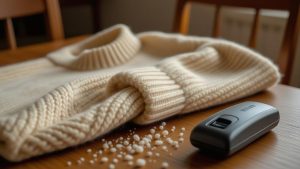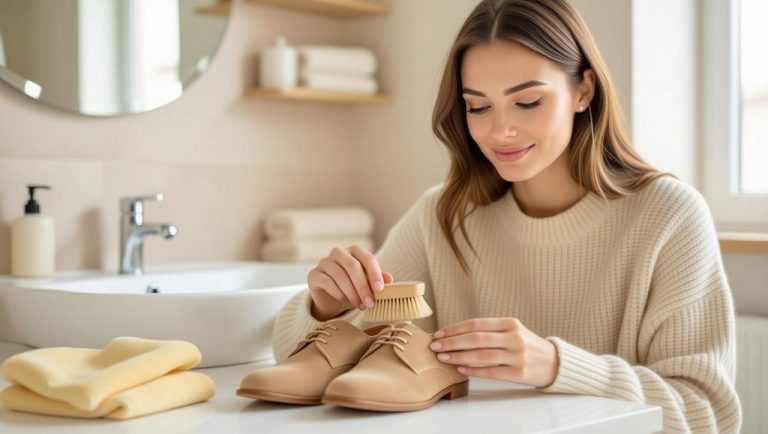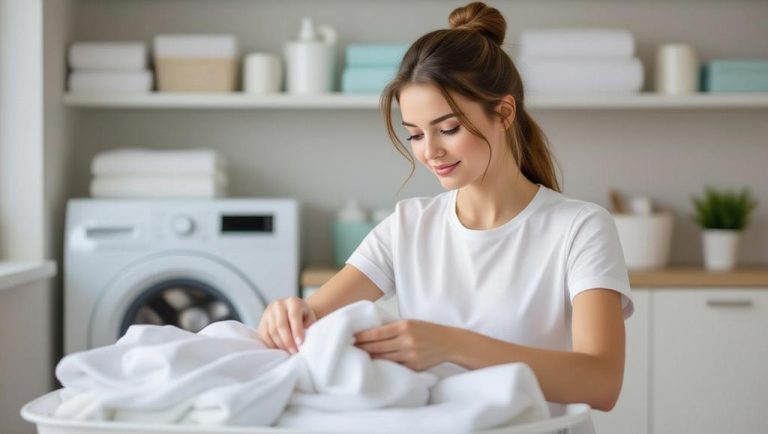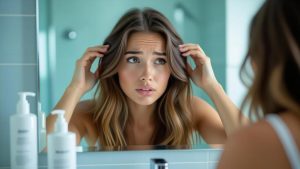What is the black fluffy stuff in my hair?
The black fluffy stuff you might find in your hair can be quite puzzling and even a bit alarming at first. But don’t worry, it’s more common than you might think! This mysterious fluff can range from tiny specks to more noticeable clumps, and it’s often a sign of various underlying causes. In my experience, I’ve seen it linked to everything from environmental factors to certain health conditions. It’s like a little reminder from our hair to take a closer look at our overall well-being and hair care routine.
When I first noticed this black fluff in my hair, I was totally freaked out. But after doing some research and talking to a dermatologist, I realized it’s not as scary as it seems. It’s just our hair’s way of telling us something’s up. And trust me, once you know what’s causing it, it’s much easier to deal with!
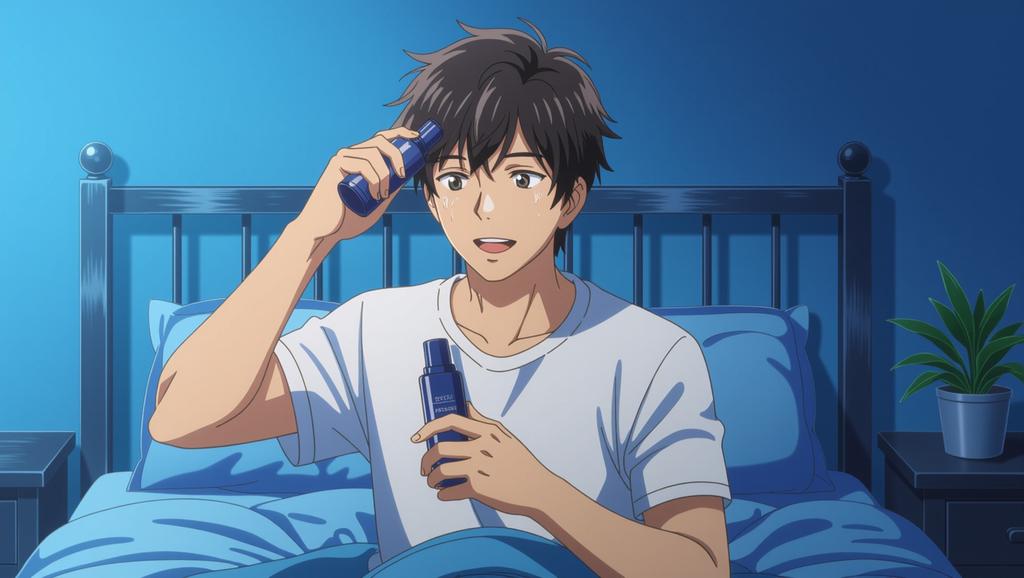
Common causes of black fluffy stuff in hair
Environmental factors
Environmental factors play a significant role in the appearance of black fluffy stuff in your hair. If you live in a city like I do, you’re constantly exposed to pollution, dust, and other airborne particles. These can easily get trapped in your hair, especially if you’re out and about a lot. I remember after a long day in the city, my hair would feel gritty and when I combed it out, there’d be this black fluff all over the place.
Another environmental factor to consider is the water you use. If you’re in an area with hard water, it can leave mineral deposits in your hair, which might contribute to that black fluffy stuff. I switched to a water softener at home, and it made a huge difference! Also, if you’re someone who loves to swim, the chlorine in pools can dry out your hair and make it more susceptible to collecting those pesky particles.
Hair products and styling
The hair products and styling tools we use can also be culprits behind the black fluffy stuff. I used to be a big fan of dry shampoo until I realized it was leaving residue in my hair that looked a lot like that black fluff. Some hairsprays and gels can do the same, especially if they’re not washed out properly. And let’s not forget about heat styling tools; overuse can damage your hair, making it more likely to break and form those fluffy bits.
When choosing hair products, I’ve learned to go for ones that are free from heavy silicones and other build-up causing ingredients. And if you’re like me and love experimenting with different hairstyles, make sure to give your hair a break from heat styling now and then. It not only helps prevent the black fluff but also keeps your hair healthy and vibrant.
Health conditions
Sometimes, the black fluffy stuff in your hair can be a sign of underlying health conditions. One of the most common is a fungal infection called piedra, which can cause black or white growths on your hair shaft. I had a friend who dealt with this, and it was quite the ordeal! Another condition to watch out for is seborrheic dermatitis, which can lead to dandruff and might contribute to the appearance of black fluff.
If you’re experiencing other symptoms like scalp itchiness, redness, or hair loss, it might be time to consult a doctor. I’ve learned that our hair can be a great indicator of our overall health, so it’s worth paying attention to these signs. And hey, if you catch it early, you can manage it much more effectively!
How to identify the black fluffy stuff in your hair
Identifying the black fluffy stuff in your hair can be a bit tricky, but with a few simple steps, you’ll get the hang of it. First off, take a close look at your hair under good lighting. I like to use a hand mirror and stand near a window to see the details clearly. You might notice small, black, fluffy particles that seem to cling to your hair strands.
Another way to identify it is by running your fingers through your hair. If you feel any gritty or rough texture, that could be the black fluff. I often do this after a long day outside, and it’s a quick way to check. If you’re still unsure, try combing your hair over a white towel or sheet. The contrast will make it easier to spot any black fluff that falls out.
Lastly, if you’re really curious about what’s going on, consider taking a sample to a dermatologist. They can use a microscope to give you a definitive answer. I did this once, and it was super enlightening! It’s like detective work for your hair, and it can help you figure out the best way to deal with the fluff.
Is the black fluffy stuff in my hair harmful?
So, is the black fluffy stuff in your hair harmful? In most cases, it’s not something to panic about. From my experience, it’s usually just a cosmetic issue rather than a health hazard. However, it can be a sign of underlying conditions that might need attention.
If the black fluff is due to environmental factors like pollution or hard water, it’s not harmful but can make your hair look dull and feel gritty. I’ve dealt with this, and while it’s annoying, it’s not dangerous. On the other hand, if it’s caused by a fungal infection like piedra or seborrheic dermatitis, you might need treatment to prevent it from worsening.
In rare cases, if the black fluff is accompanied by other symptoms like severe scalp irritation, hair loss, or unusual odors, it could be a sign of a more serious condition. That’s when you should definitely see a doctor. I once had a friend who ignored these signs, and it turned out to be a yeast infection that needed medical attention. So, while the black fluff itself isn’t usually harmful, it’s important to listen to what your hair is telling you.
How to prevent black fluffy stuff from appearing in your hair
Regular hair care routine
A regular hair care routine is crucial in preventing the black fluffy stuff from appearing in your hair. I’ve found that washing my hair regularly with a gentle shampoo helps remove any buildup from environmental pollutants or hair products. It’s like giving your hair a fresh start every time!
Don’t forget to condition your hair after shampooing. Conditioning not only keeps your hair smooth and manageable but also helps protect it from environmental damage. I like to use a leave-in conditioner for extra protection, especially if I’m going to be out in the city all day.
And here’s a tip: try to avoid going to bed with wet hair. I used to do this all the time, and it would leave my hair more susceptible to collecting those black fluffy particles. Let your hair dry completely before hitting the pillow!
Choosing the right hair products
Choosing the right hair products can make a big difference in preventing black fluffy stuff. I’ve learned to steer clear of products with heavy silicones and other ingredients that can leave a residue in your hair. Instead, opt for lightweight, water-based products that rinse out easily.
Another thing to consider is the pH balance of your shampoo and conditioner. Products that are too alkaline can strip your hair of its natural oils, making it more prone to damage and buildup. I’ve found that using a pH-balanced shampoo keeps my hair healthier and less likely to collect that black fluff.
And if you’re dealing with a specific issue like dandruff or a fungal infection, look for shampoos with active ingredients like ketoconazole or zinc pyrithione. These can help manage the underlying cause and prevent the black fluffy stuff from appearing.
Lifestyle changes
Sometimes, preventing the black fluffy stuff in your hair requires a few lifestyle changes. If you’re a smoker, consider quitting or at least reducing your exposure to smoke. I’ve noticed that my hair gets less gritty when I’m not around smokers as much.
Another lifestyle change to consider is your diet. Eating a balanced diet rich in vitamins and minerals can help keep your hair healthy and less prone to damage. I’ve found that adding more omega-3 fatty acids and antioxidants to my diet has made a noticeable difference in my hair’s overall health.
And don’t forget about stress management. High stress levels can contribute to hair issues like dandruff and hair loss, which might lead to the black fluffy stuff. I try to incorporate relaxation techniques like yoga and meditation into my routine, and it’s helped keep my hair in better shape.
When to see a doctor about black fluffy stuff in your hair
Knowing when to see a doctor about the black fluffy stuff in your hair is important. If you’ve tried changing your hair care routine and it’s not making a difference, it might be time to seek professional help. I’ve been there, and it’s frustrating when home remedies don’t cut it.
If you notice other symptoms like severe scalp itching, redness, or hair loss along with the black fluff, don’t hesitate to make an appointment. These could be signs of a more serious condition that needs medical attention. I once had a friend who ignored these signs, and it turned out to be a fungal infection that required prescription treatment.
And if you’re immunocompromised or have a weakened immune system, it’s even more crucial to see a doctor. Conditions like cutaneous mucormycosis can be life-threatening, and early diagnosis is key. I’ve learned that it’s always better to be safe than sorry when it comes to our health.
Treatment options for black fluffy stuff in hair
At-home remedies
At-home remedies can be a great first step in dealing with the black fluffy stuff in your hair. One of my favorite remedies is using apple cider vinegar diluted with equal parts water as a rinse after shampooing. It helps remove buildup and leaves my hair feeling clean and fresh.
Essential oils like tea tree oil or lavender oil can also be beneficial. I like to mix a few drops with coconut oil and apply it to my scalp as a treatment. It not only helps with the black fluff but also soothes any scalp irritation.
And don’t underestimate the power of a good old-fashioned lemon juice rinse. It’s a natural clarifier that can help remove any residue causing the black fluffy stuff. I’ve used this method a few times, and it’s always left my hair feeling lighter and cleaner.
Professional treatments
If at-home remedies aren’t cutting it, it might be time to consider professional treatments. For conditions like piedra, a doctor might recommend antifungal shampoos or creams containing ingredients like ketoconazole or miconazole. I’ve seen friends use these, and they can be really effective.
For more severe cases, systemic antifungal medications like fluconazole or itraconazole might be necessary. These are usually prescribed for conditions like tinea capitis or seborrheic dermatitis. I’ve heard from a few people that these treatments can make a big difference, especially when used alongside topical treatments.
And if you’re dealing with a condition like cutaneous mucormycosis, prompt medical attention is crucial. This can involve a combination of antifungal medications and possibly surgery to remove affected tissue. It’s serious stuff, but with early intervention, the outlook can be much better.

Real-life experiences: Stories from people who dealt with black fluffy stuff in their hair
Hearing real-life stories can be really helpful when you’re dealing with the black fluffy stuff in your hair. I have a friend, Sarah, who noticed the black fluff after moving to a city with heavy pollution. She tried everything from changing her shampoo to using at-home remedies, but nothing seemed to work. Finally, she visited a dermatologist who diagnosed her with piedra. After a few weeks of using an antifungal shampoo, the black fluff disappeared, and her hair felt healthier than ever.
Another friend, Mike, experienced the black fluffy stuff due to his love for dry shampoo. He was always on the go and loved the convenience of dry shampoo, but he didn’t realize it was leaving a residue in his hair. Once he switched to washing his hair more frequently and using a clarifying shampoo, the black fluff was gone. He learned the hard way that sometimes, less is more when it comes to hair products.
And then there’s my cousin, Lisa, who had a more serious issue. She noticed the black fluff along with severe scalp itching and hair loss. After seeing a doctor, she was diagnosed with seborrheic dermatitis. With a combination of medicated shampoos and lifestyle changes, she managed to get her scalp back to normal. It was a tough journey, but she’s now more aware of her hair health than ever.
Conclusion: Understanding and managing black fluffy stuff in your hair
Understanding and managing the black fluffy stuff in your hair can be a bit of a journey, but it’s totally doable. From my experience, it’s all about identifying the cause, whether it’s environmental factors, hair products, or a health condition. Once you know what’s behind it, you can take the right steps to manage and prevent it.
Regular hair care, choosing the right products, and making lifestyle changes can go a long way in keeping the black fluff at bay. And if you’re unsure or dealing with more serious symptoms, don’t hesitate to see a doctor. They can provide the professional guidance and treatment you might need.
Remember, our hair is a reflection of our overall health and well-being. By paying attention to the black fluffy stuff and taking action, you’re not just keeping your hair looking good—you’re also taking care of yourself. So, embrace the journey, learn from it, and keep your hair happy and healthy!

